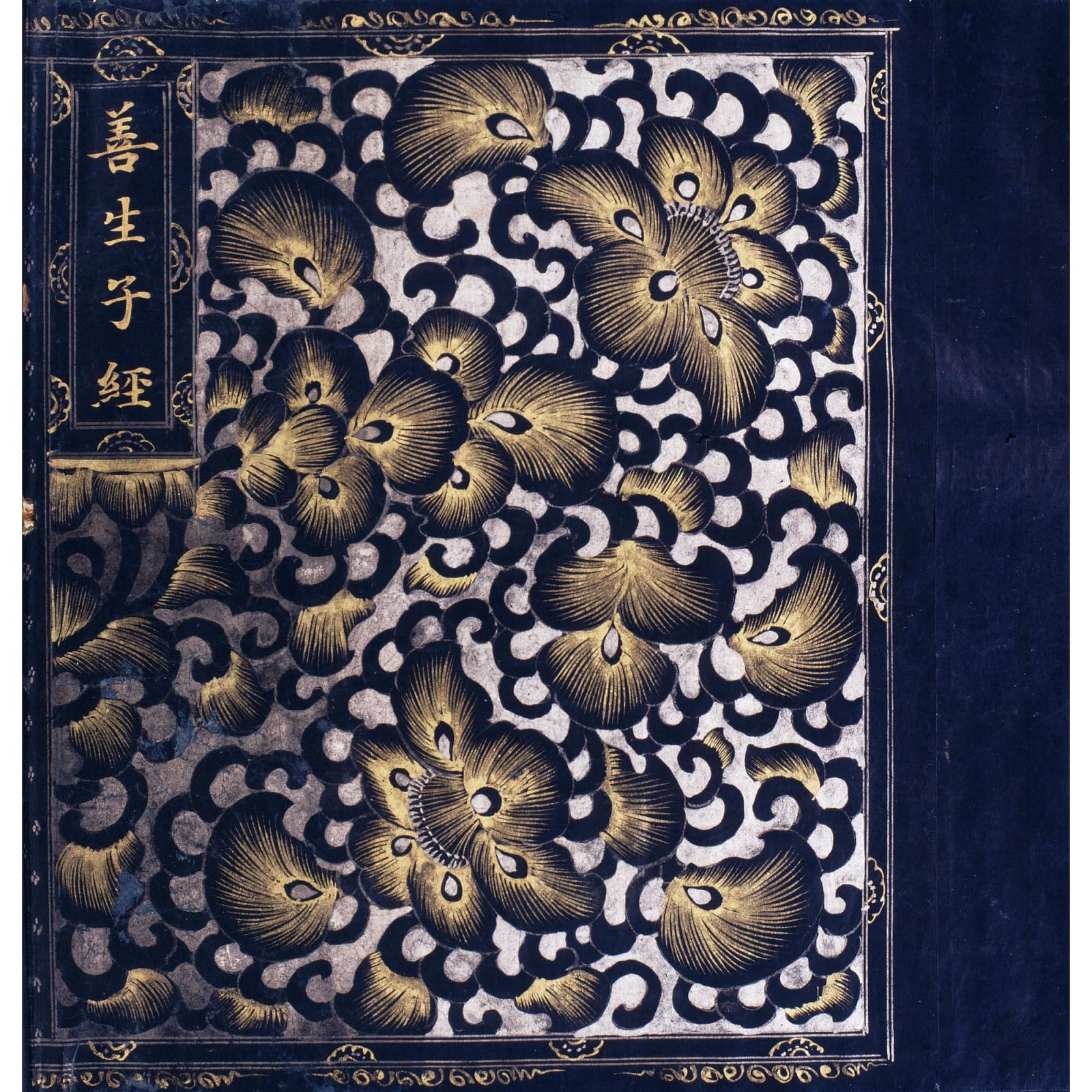The Sigalovada Sutta from the Jingoji-kyō
Gold and silver on dark-blue paper, handscroll
Sealed “Jingo-ji” at the beginning
With an original cover, original knobs, and an original cord
Mid to late 12th century
25.8 x 328 cm
Further images
The present sutra is confirmed as a part of the complete collection of Buddhist scriptures and decorative sutra scrolls, dedicated to the Jingo-ji Temple, Kyoto. This noble origin makes this work known as the Jingoji-kyo. The temple legend indicates that the abdicated Emperor Toba commissioned the transcription of the scriptures, his successor the abdicated Emperor Go-Shirakawa completed the mission and contributed the sutras to the temple in 1185. Consistent with the legend, the inscription on the wooden box notes that this Sigalovada Sutta is one of the Issai-kyo donated by the abdicated Emperor Go-Shirakawa. One of the wrappers, bore a date of the fifth year of Kyuan era (1149), has been found in the Jingo-ji Temple, which could be seen as one of the references in regard to the making of the transcription.
The cover of the sutra is decorated with hosoge, or peony-like representation of lotus flower and arabesque vines in gold and silver pigments. The title Sigalovada Sutta is written in gold, margined with the double-line rectangular frame in silver. Same as the cover, the frontispiece employs the gold pigments, illustrating the preaching of Sakyamuni at Vulture Peak. It bears a large rectangular Jingo-ji seal in red ink at the beginning, and the text is bridged by seven sections. The gilded plectrum-shaped knobs with the decoration of floral motif remain original and the extensively damaged tie-string survives thankfully. Except for a few of worm-eaten damages, the present sutra is overall in a good condition and hauntingly sublime.
The cover of the sutra is decorated with hosoge, or peony-like representation of lotus flower and arabesque vines in gold and silver pigments. The title Sigalovada Sutta is written in gold, margined with the double-line rectangular frame in silver. Same as the cover, the frontispiece employs the gold pigments, illustrating the preaching of Sakyamuni at Vulture Peak. It bears a large rectangular Jingo-ji seal in red ink at the beginning, and the text is bridged by seven sections. The gilded plectrum-shaped knobs with the decoration of floral motif remain original and the extensively damaged tie-string survives thankfully. Except for a few of worm-eaten damages, the present sutra is overall in a good condition and hauntingly sublime.







